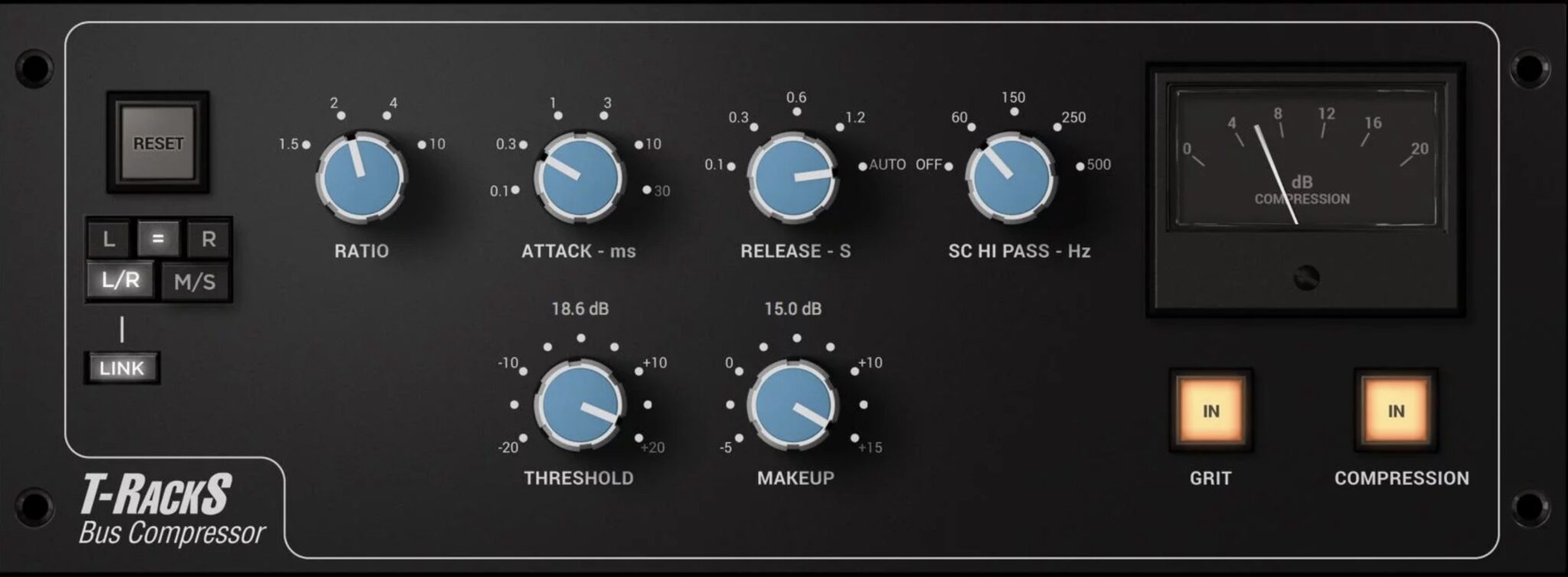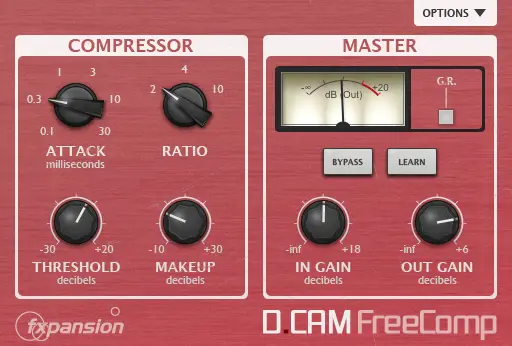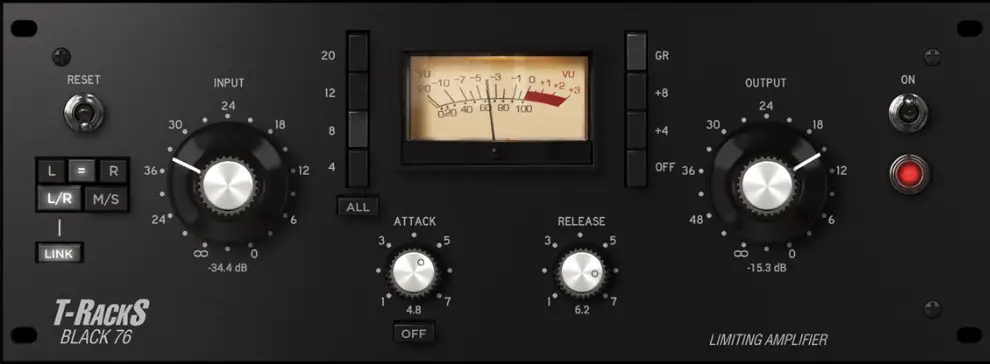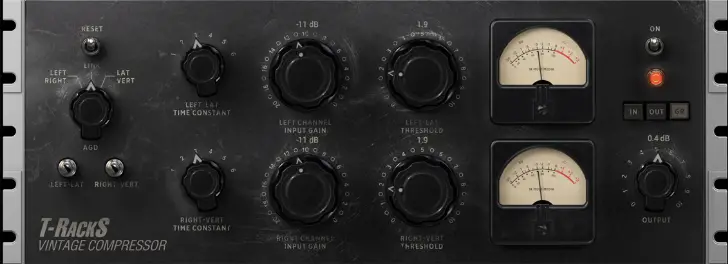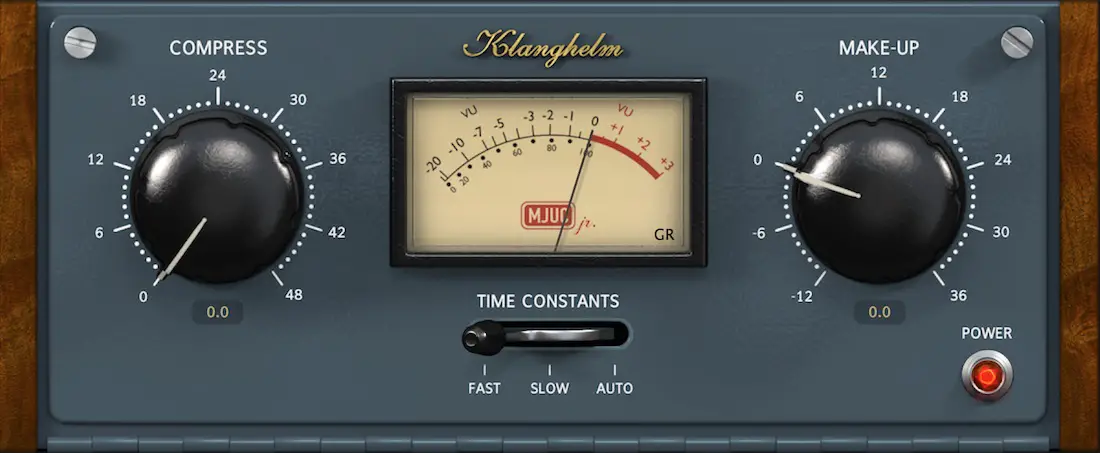Compression is key to getting punchy, professional-sounding drums, but how exactly do you apply compression to get the sound you're looking for?
If you're looking for punchy drums, the best way to do this is by applying the following compression settings...
Use a moderate ratio setting and a slow attack and release time for a punchy drum sound. Applying bus compression and parallel compression the entire drum kit can likewise increase the punchiness of the drums.
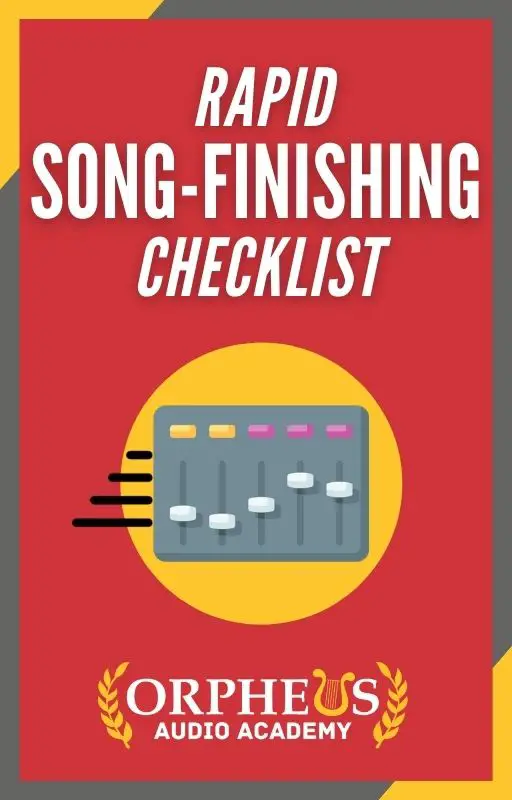
Create Better Songs, Faster
Click below to download my free song-finishing checklist to help you create radio-ready songs without taking months to complete them.
What is compression and how does it work?
Compression is a process that reduces the dynamics of an audio signal.
In other words, it makes the loudest parts softer and the softest parts louder.
As a result, it makes it easier to hear all the parts of a recording, since the dynamics are more consistent.
When it comes to drums, your most important controls are going to be your attack and release.
Attack: how long it takes for the compressor to go from no compression, to full compression.
A fast attack is going to squash the initial transient or beginning part of a sound, while a slower attack will cause the compressor to kick in on more of the tail of the sound.
Release: how long the compressor should keep compressing the audio signal after it passes the threshold.
A fast release means the compressor will release quickly, and the tail of a sound won't be as compressed.
For my complete guide to compression, check out my guide here.
With that said, how should you go about compressing drums?
1. Use A Slow Attack & Release Time
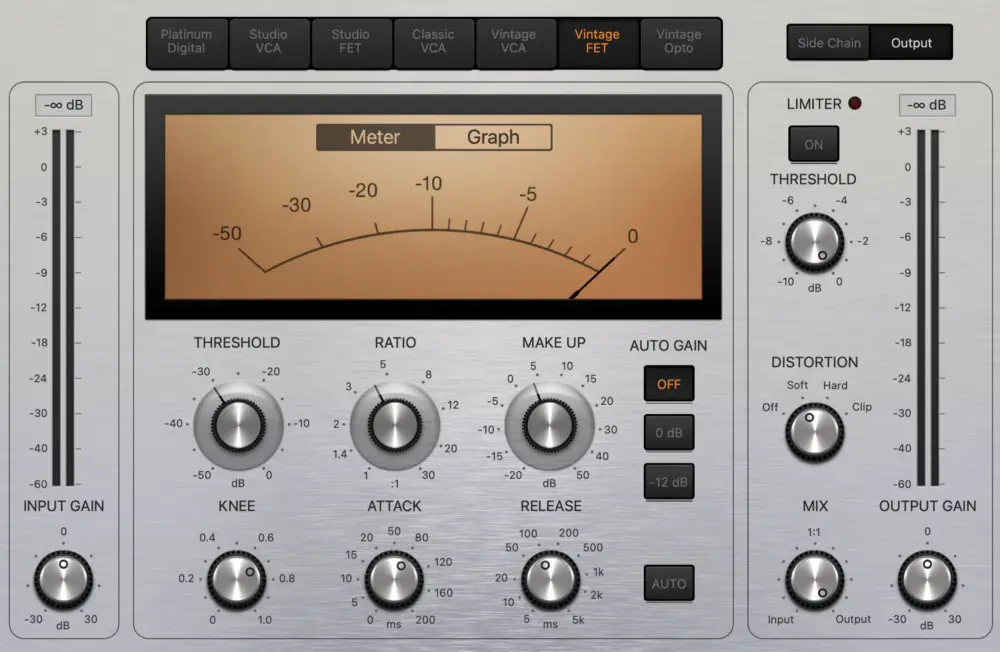
Generally, you're going to want to use a slower attack time on your drums because you don't want to squash the transient and make your drums sound dull.
Set Your Attack Time
Listen closely to the punch in your drums when adjusting the attack of the compressor. Slow down the attack time until you find the punch you're looking for. Don't worry about the exact number you arrive at.
The exception to this rule is if you're dealing with a particular drum sound that has unwanted peaks.
For example, you might have a snare drum whose transient is too loud and harsh.
You can use a fast attack and release to turn down that initial peak so that it blends better with the rest of your drum kit
Set Your Release Time
If you're looking for punchy drums, then you're going to want a slower release time as well.
With a slow attack and release time, you ensure that the drum transient mostly avoids the compressor, and the tail of the drums stay compressed.
The final result is a louder transient sound which we interpret as "punch".
You can also experiment with a fast release time as well, which means the tail of the drum sound won't be as compressed, which can lead to a bigger and more aggressive sound.
2. Dial In A Moderate To High Ratio
The ratio control on a compressor determines how much gain reduction will be applied to the signal that passes the threshold.
For example, a ratio of 2:1 means that for every 2 dB that crosses the threshold, its gain will be will be attenuated (reduced in volume) so that at the output it increases by only 1dB.
A low ratio lets more dynamics through, since the signal won’t be attenuated as much, whereas a higher ratio makes the drums have less dynamics.
A good place to start with drums is to adjust the ratio to 4:1. If the drums are still too dynamic, up the ratio to 5:1 or higher.
Use your ears and adjust the settings for what sounds best.
Enter your text here...
3. Use Multiple Compressors
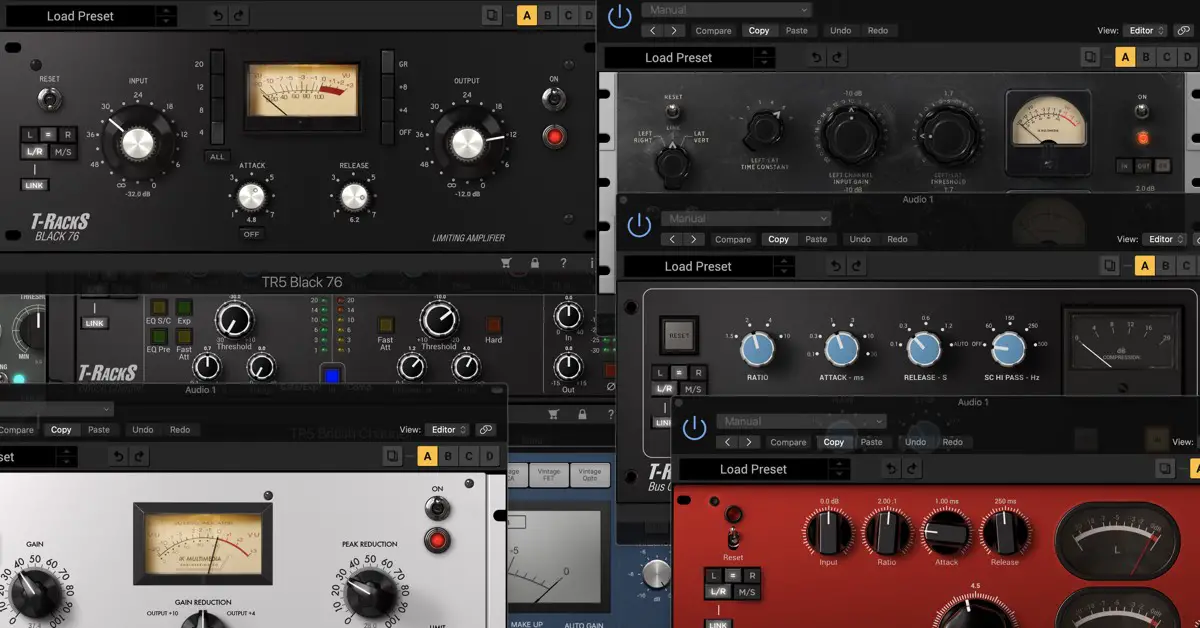
For best results, it's a good idea to apply compression in stages.
Start by compressing your drum bus (the track all of your drum tracks go to), and then also add compression to your individual drum tracks as needed.
Finally, you'll also want to apply some compression to your mix bus (which will impact all of your tracks, not just your drums).
This approach helps to create not just an upfront sound, but also a blended or "glued together" sound.
For more help with glue/bus compression, check out my article here.
4. Use Parallel Compression
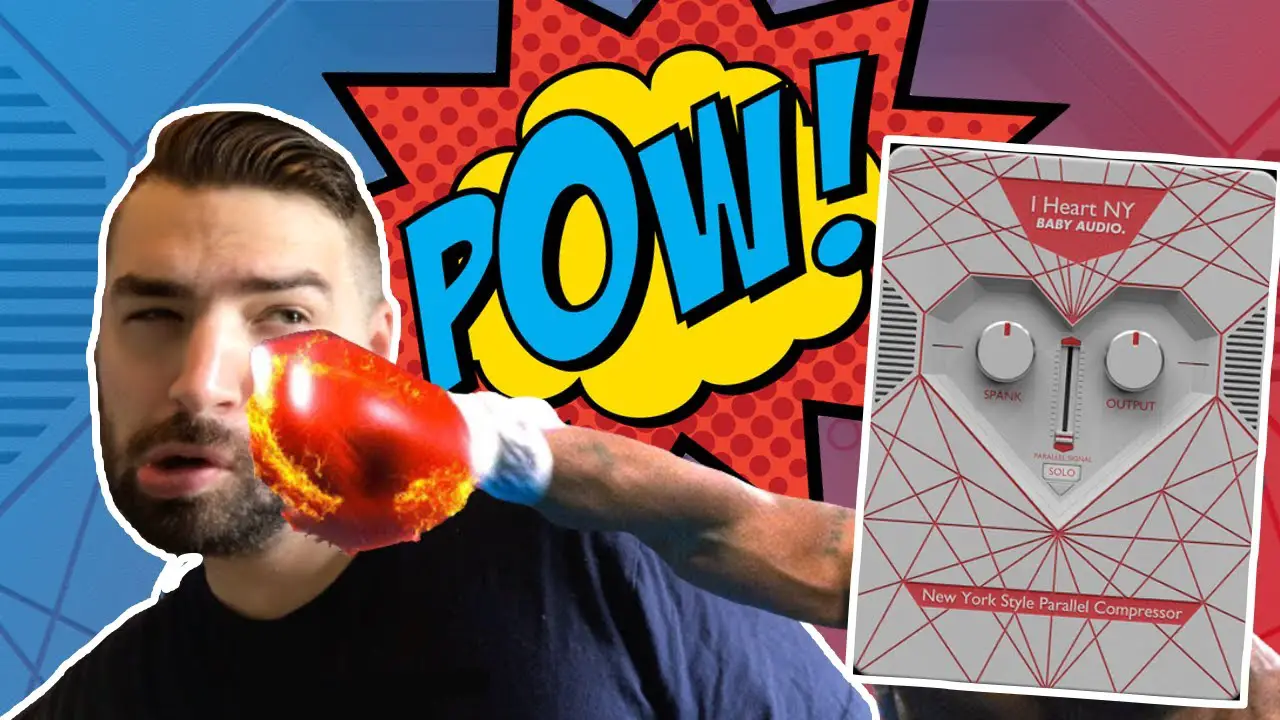
Parallel processing is one of the best techniques overall for a professional sound.
Parallel compression is especially great on drums, as it adds energy and aggression to your drums.
and it involves blending a heavily compressed copy of your drums with an uncompressed copy.
5. EQ Your Compressor
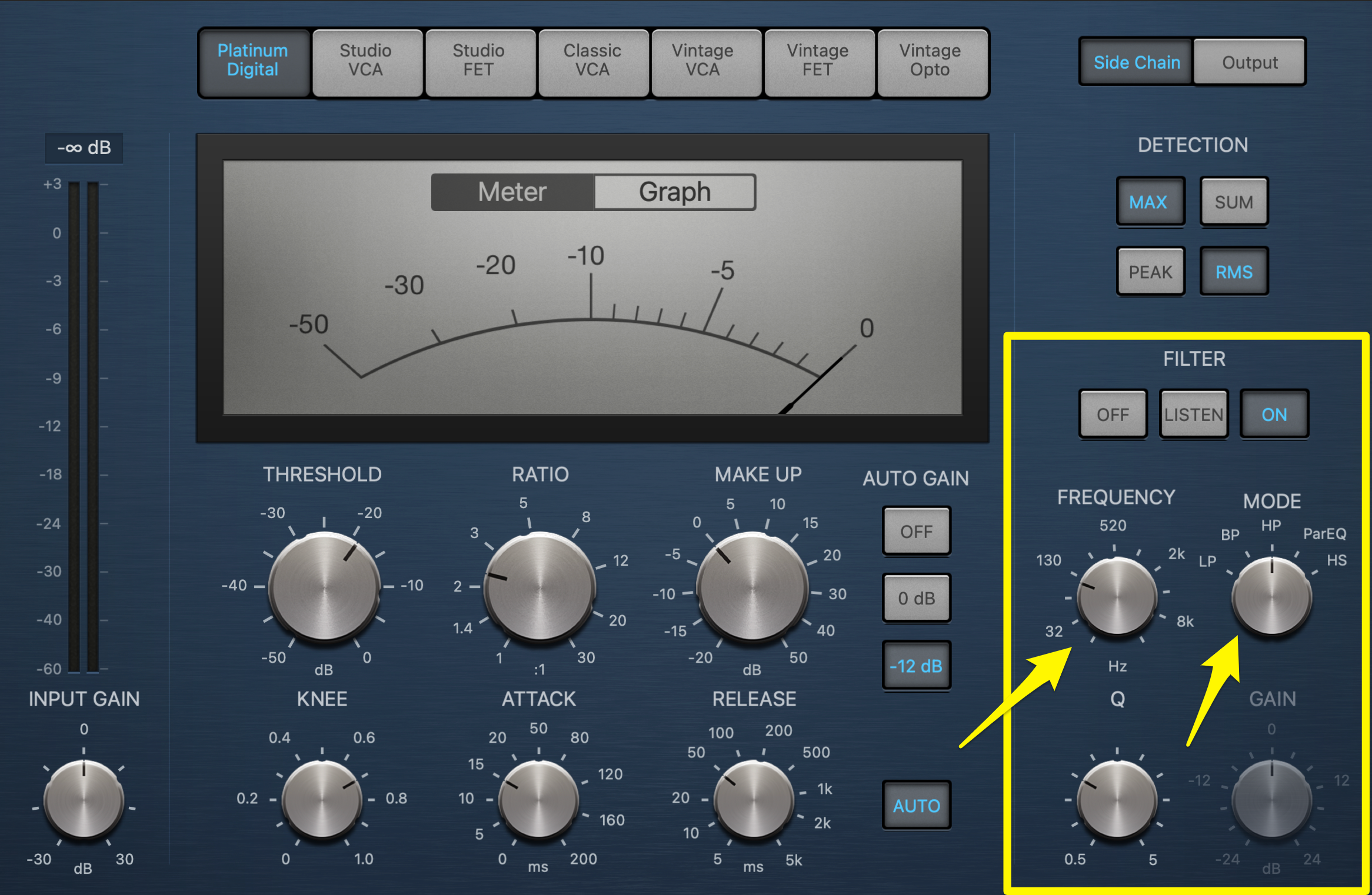
If your compressor has a built-in EQ on it, it can be a good idea to use it when on your drum bus.
This is because when compressing drums as a group, it's likely our kick or snare has much more energy than the rest of your drums. This means that these sounds will trigger the compressor more than the rest of the drums do.
This can cause the compressor to aggressively compress the entire group, which isn't what you want.
So you can use the compressor the high-pass filter the low end of your drums so only the mid and higher frequencies trigger the compressor.
How to compress drums for a tighter sound
There are a number of ways to achieve a tighter, more compressed sound on your drums.
Kick:
Try using a compressor with a fast attack and release, and a ratio of 4:1.
Snare:
You can use a similar settings on your snare drum as you use for your kick, or you may want to experiment with different ratios to find what works best for you.
Hi hats:
Hi hats can also benefit from compression, using a lower ratio (2:1 or below) to help even out the sound.
Toms:
Tom drums can be compressed using either high or low ratios, depending on the desired effect.

Create Better Songs, Faster
Click below to download my free song-finishing checklist to help you create radio-ready songs without taking months to complete them.
The different types of compression for drums
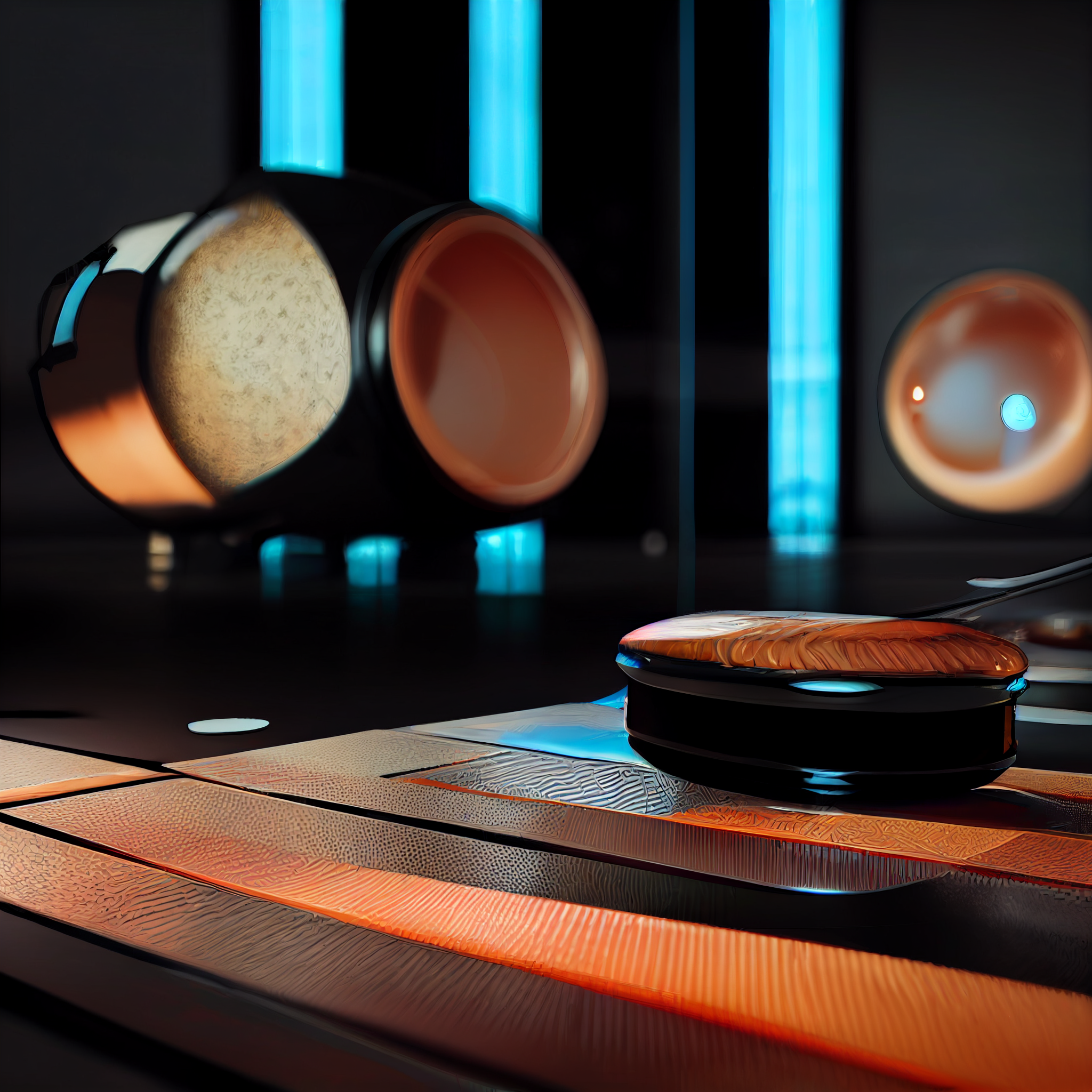
When it comes to drum compression, there are a few different types that you can choose from. Each type has its own advantages and drawbacks, so it's important to select the one that will best suit your needs.
VCA
VCA compression is a popular choice for drum compression as it is very versatile and can be used for a variety of purposes.
One of the main advantages of VCA compression is that it is very transparent, meaning that it won't alter the sound of your drums too much. However, it's not great for adding warmth or color.
FET
FET compression is another popular choice for drum compressors.
FET compressors are known for being fast and aggressive while staying transparent enough to create large shifts in dynamics.
These can be especially good for parallel compression.
They're not as good if you're looking for a transparent form of compression.
Tube
Tube compression is the final type of drum compressor that you might want to consider. Tube compressors are great for adding warmth, color, and fatness, which can add some extra depth and character to your drums.
They're also great for adding glue to your drums on the bus.
However, they're not as good at controlling hard transients
This guide will help you know which compressor to choose for your mix in any situation.
Best compressor plugins for drums
VCA
If you're looking for specific compressor plugins that are great for drums, I've got you covered.
Pro: IK Multimedia Bus Compressor
This plugin is modeled after the famous SSL bus compressors.
Free: FXPansion DCAM
This is a free plugin modeled after VCA compressors.
FET
Pro: IK Multimedia Black 76
Great limiting Amplifier that is modeled after what is probably the most used, most known, and most universally recognized compressor/limiter in the audio industry.
Free:
Analog Obsession FETISH
A great free 1176 emulation made by an independent developer.
Tube
Pro: IK Multimedia Vintage Compressor
IK Multimedia's emulation of a classic, legendary, compressor.
Free: Klanghelm MJUCjr
A variable-mu compressor capable of smooth leveling but also heavy pumping effects.
Drum compression is an essential tool for any mix.
It can help you achieve a tighter, more consistent sound while also adding power and punch.
By understanding how compression works and using it effectively, you can create drums that stand out in the mix and make your music sound better.
Finish More Radio-Worthy Songs, Faster!
Creating punchy pro drums is just one piece of the puzzle when it comes to producing pro-quality songs.
If you want a proven step-by-step formula for mixing radio-worthy tracks from start-to-finish...
Create Pro-Mixes, Faster
Click below to download my free song-finishing checklist to help you create radio-ready songs without taking months to complete them.
This checklist will walk you through a proven step-by-step mixing and mastering process so that you don't ever have to guess or wonder what to do next.
You'll know exactly what to do, and when, so you can quickly mix, master, and finish more tracks.
I hope you found this post valuable on how to get vocals to sit upfront in the mix helpful.
If so, feel free to share, and let me know in the comments below…

